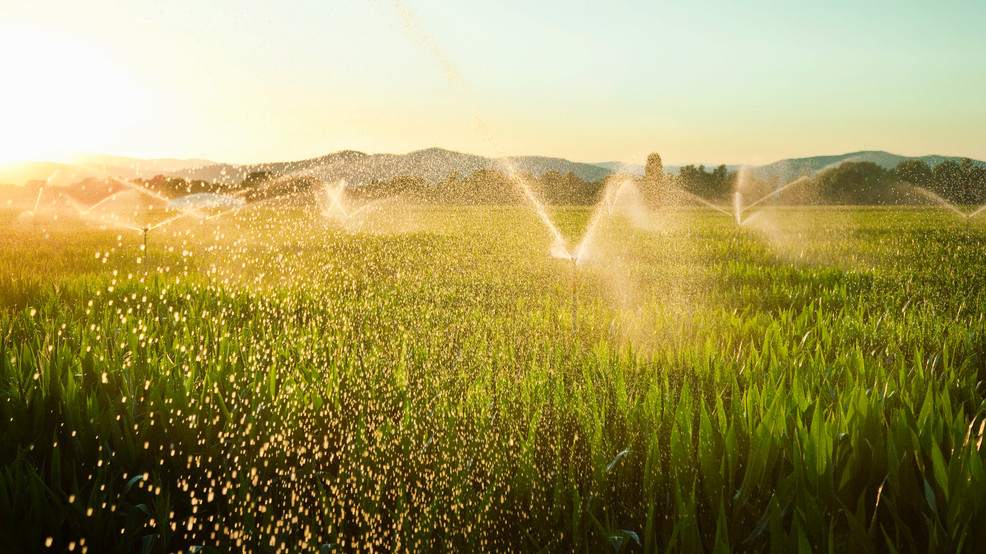
Water is a precious resource that plays a vital role in sustaining the diverse industries and residents of Texas. As the second-largest state in the United States (in square miles), Texas is known for its rich and varied landscape, including vast agricultural regions, a thriving energy sector, and rapidly growing urban areas.
Understanding the multifaceted impact of water on the major industries and residents of Texas is essential, as it directly influences the state’s economic stability and environmental sustainability.
Here are some of the top sectors where water is most vital.
1. Agriculture
Agriculture is the lifeblood of Texas, contributing significantly to the state’s economy. The Lone Star State is home to vast farmlands and ranches, producing a wide variety of crops and livestock. Water is the primary driver of agricultural production in Texas, and its availability or scarcity can have profound effects on the industry.
Farmers across the state are trying to balance the growing demand for agricultural products, protect their land for future generations, and improve the efficiency of their operations so that they can conserve water while meeting the needs of consumers. Four key practices are central to this effort:
Crop rotation: Crop rotation is a time-tested agricultural technique used to optimize water usage. By alternating the types of crops grown in a specific field, farmers can reduce soil degradation, control pests, and minimize water stress on the land. This method helps preserve the long-term productivity of the soil and ensures that water resources are used efficiently.
Conservation tillage: Traditional plowing and tilling practices can increase water evaporation and soil erosion. Conservation tillage methods involve minimal soil disturbance, leaving crop residues on the field. This reduces water loss, enhances soil health, conserves moisture, decreases the usage of machinery, and lowers emissions, improving the sustainability of agricultural operations across the board.
Cover crops: Cover crops are non-commercial crops planted between main crops to prevent erosion and suppress weeds. They also help improve soil structure and water retention. By utilizing cover crops, farmers can reduce the need for additional irrigation and keep the soil fertile for future use.
Advanced irrigation systems: Modern agricultural practices have introduced advanced irrigation systems that are more efficient in delivering water to crops. Drip irrigation, for example, minimizes water wastage by delivering water directly to the root zone of plants. Furthermore, farmers are increasingly incorporating data-driven technologies, such as sensors and weather forecasts, to optimize irrigation schedules and conserve water.
2. Energy
The energy industry is another cornerstone of Texas’ economy, with the state being the leading producer of oil and natural gas in the United States. Water plays a significant role in the extraction and processing of these resources, making water availability crucial for the energy sector’s stability.
Water-intensive processes, such as hydraulic fracturing (fracking) for oil and natural gas extraction, require substantial amounts of water. In regions where water resources are limited, the energy industry has had to adapt by implementing recycling and treatment systems to reduce water consumption. Additionally, the development of waterless hydraulic fracturing techniques is an ongoing effort to address this challenge.
3. Urban areas
Texas’ population is booming, particularly in major urban centers like Houston, Dallas, and Austin. Providing clean and reliable water to these growing urban areas is of paramount importance for public health, industrial operations, and overall quality of life. This requires effective water management practices, including infrastructure development, wastewater treatment, and conservation efforts.
Efforts to mitigate water scarcity in urban areas include water recycling and reuse initiatives, updated plumbing codes to encourage water-efficient fixtures, and public awareness campaigns about responsible water consumption.
Water’s impact on residents statewide
The availability and quality of water in Texas directly affect the daily lives of its residents. From drinking water to recreational activities, water plays a crucial role:
1. Drinking water: Ensuring a reliable supply of safe drinking water is a top priority for Texas residents. Water treatment facilities and strict quality standards are in place to safeguard public health.
2. Recreation: Texas offers an array of recreational opportunities, such as boating, fishing, and swimming in its numerous lakes and rivers. Sustaining healthy water bodies is essential for maintaining these activities.
3. Environment: Many native species of plants and animals depend on Texas’ waterways and ecosystems. Conserving water is critical to preserving the natural habitats and biodiversity of the state.
Water is the lifeblood of Texas, sustaining its agricultural, energy, and urban industries while providing for the well-being of its residents. As the state’s population and demand for resources continue to grow, the responsible use and conservation of water are essential for the long-term health of Texas’ economy and environment. By adopting water conservation methods in agriculture, promoting efficient water use in energy production, and embracing sustainable practices in urban areas, Texas can meet the challenges of water scarcity and ensure a prosperous and sustainable future for all its residents.
If you are interested in learning more about the connection between water and agriculture or strategies you can use to help conserve water, visit watergrows.org.
